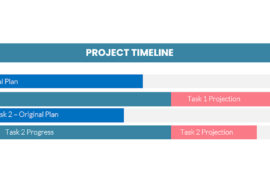As the notion of enterprise project management becomes more prevalent in the industry, we’re starting to see epm approaches divide into one of a small number of camps. As I’ve said a number of times in this column, there are many perspectives of project management in an organization and lots of different approaches to how to empower each of those perspectives. One of the major choices that a new project management office has to deal with is who will be responsible for the data itself.
It’s a basic tenet of systems analysis that for each piece of input data there can be only one person responsible. If there are multiple people responsible for a single entry of data, managing the quality of that data becomes very difficult. So, when we see Project Management Offices get set-up for the first time, one of the key challenges is to decide if the role of the PMO personnel is to collect, analyze and report on project data or if there role should be more as a coordinator, bringing the data of many individual project managers and even individual team members into a cohesive collection of data.
In the first scenario, the PMO will look for a high-end centralized project system. Project managers will put the bulk of the project management data in directly or with the assistance of schedulers. The individual team members will see reports out of the centralized system and there input to that system will be either as a part of meetings or, perhaps through their timesheet system. This type of system will typically have advanced functionality for critical path scheduling, resource leveling, skill scheduling, multi-project analysis, risk analysis such as Monte Carlo analysis and extensive reporting capabilities. Sounds great of course, but this type of product will work best in the hands of skilled project scheduling workers. We see this type of tool in environments where there are a small number of projects which are very large and complex.
In the second scenario, the role of the Project Management Office is designed as a clearinghouse for work which is being managed in a much more decentralized manner. In this case, team leaders or project managers of much smaller elements of projects work on their own project data. The team members are given direct access to the system and interact with it to find out what they are working on and to update the schedule with their own progress. This type of system is oriented more around collaborative functionality. There will be tools for individuals to customize their own views, to see system announcements and online discussions, to get alerts for project changes, to add collateral data to the project such as documentation, issues progress notes and more. There is usually less emphasis on reporting in this type of system because the system itself is typically available to everyone. Instead, you’ll find more emphasis on personalized online views. We see this type of approach in an environment where there are numerous projects which share resources. A matrix organization would find this type of tool a good fit.
Again, this sounds great. This type of product will work best in an organization where the individual project teams are empowered to function more independently but still interact with the rest of the organization for elements such as shared resources or portfolio prioritization.
Which is the right approach? It’s a trick question of course. For each organization, you’ve got to look at what the key business drivers are. There’s a definite tradeoff. The centralized system will bring a lot of data together where it can be managed in the hands of highly trained individuals. The reports and analysis will likely be first class. The problem may come in the ownership of the results by the team members who are affected. In the decentralized system, individuals are likely more empowered and the project management is done closer to the actual work. The challenge becomes getting sufficient conformity and compliance to have the consolidated data make sense.
One key to staying effective is to make sure that your project management office is organized to correlate with the organization’s approach. A common problem is to find a PMO who wants to be centralized in an environment which is de-centralized.





